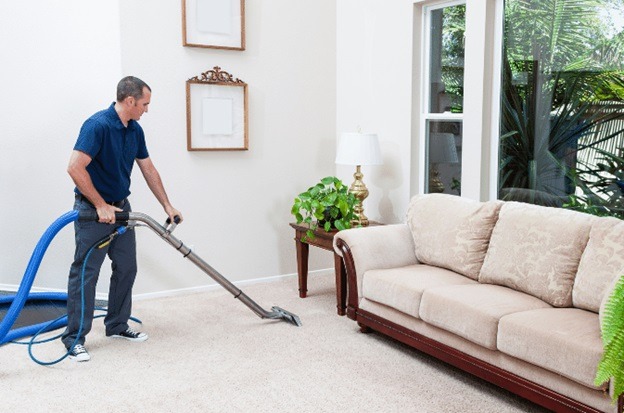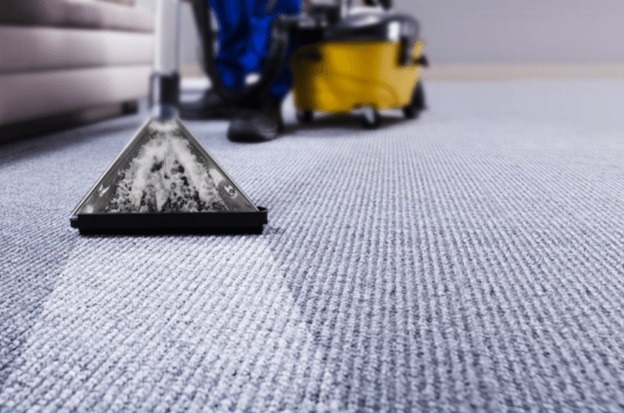Mold development on carpets is normal; especially if you live in a humid climate, your carpets have most likely been exposed to mold on several occasions. Because carpets take up the majority of the floor space in your home or business, it’s critical to keep them clean and serviced regularly. Clean and attractive carpets not only set the tone of the environment but also offer a high level of personal hygiene for residents to flourish in. As a result, carpet owners must cure mould carpets as soon as possible. And, while bleaching for mould eradication is a popular treatment, you’ll learn why it’s an ineffective and harmful cure in this article.
What is mold?
Mold is a fungus that forms on carpets when moisture is left unattended for an extended time. It has a grey tone and leaves unsightly streaks on carpets. Mold develops and spreads quickly, and if not cleaned properly, it can cause carpet dry rot. It has the ability to cause fabric and carpet padding to disintegrate, leaving you with a permanently ruined carpet. To retain the beauty and texture of carpets, mould development should be eliminated with carpet cleaning Melbourne treatment. Mold spores in the air can cause an epidemic of different health hazards and respiratory problems among residents, demanding expert treatment.
Say no to bleach
When it comes to mould eradication, bleach is without a doubt the most common go-to treatment. However, bleach should not be used on carpets since it only destroys mould on the surface of the carpet. Instead of attacking the very core of the mould, bleach only kills the top layer. If you use bleach to get rid of mould, it’s likely that the mould will come back. Chlorine bleach, which is highly recommended, dissolves wool fibers and lightens pigment in fabric. Also, except for solution dyed polyester, chlorine bleach will remove the color from all types of fibers. The issue with bleach on the carpet is that the chemical is still active. It can irritate the skin and is especially dangerous for pets and small children. Furthermore, bleach causes permanent defects on the cloth that are very hard to remove.
A better alternative for effective mold remediation
The best approach to deal with mould is to hire a skilled and dependable specialist who can guarantee their work. Experts have done carpet cleaning and mould removal treatment on several occasions, so they are well-versed in the process. They’ve been trained to clean carpets and know just what will work best for you. Experts are also equipped with mechanized tools for quick mould extraction as well as harmless chemical mixes that efficiently yet softly eliminate mould development in your carpets.
The professional treatment guarantees that the fabric is not damaged and that the results are good. For mould cleanup, experts recommend either steam cleaning or hot water extraction. They begin by inspecting the carpet or rug to decide the best remedy. Later, the carpet is cleaned thoroughly to remove debris from the surface and sprayed with an anti-fungal, cleansing spray. The solution is left to work for a while before being removed using a steamer. The heat from the steamer effectively eliminates germs while restoring the fabric’s natural sheen and texture. It is critical to get specialists to remove mould.
Other solutions for mold removal
Vinegar- Vinegar kills up to 82 percent of all fungus species and is an excellent “first-line” treatment for any mould issue. A solution made up of 80% white fermented vinegar and 20% water. All you need to do is combine the ingredients in a spray bottle and freely apply them to the afflicted region. After 20 minutes, softly sponge the mould with warm water to remove it.
Tea tree oil- Tea tree oil has incredible anti-fungal characteristics and will efficiently destroy mould, but it isn’t a terrific cleanser. A 3 percent tea tree oil solution consisting of 1 teaspoon tea tree oil and 2 cups of warm water is recommended. Fill a spray bottle halfway with the solution and spray it on the afflicted region. After 20 minutes, softly sponge the mould with warm water to remove it. If the stain mould persists, use ammonia or vinegar to remove it.
Before using any sort of cleaning procedure on upholstered goods, experts recommend performing a patch test. When carpets are affected by mould, they are in a sensitive state, and proper management is the only way to handle them. Now that you’re aware of the drawbacks of bleach, make sure you avoid it at all costs. Apart from hiring a professional, be cautious with carpets and practice proper carpet care to avoid mould in the first place.


